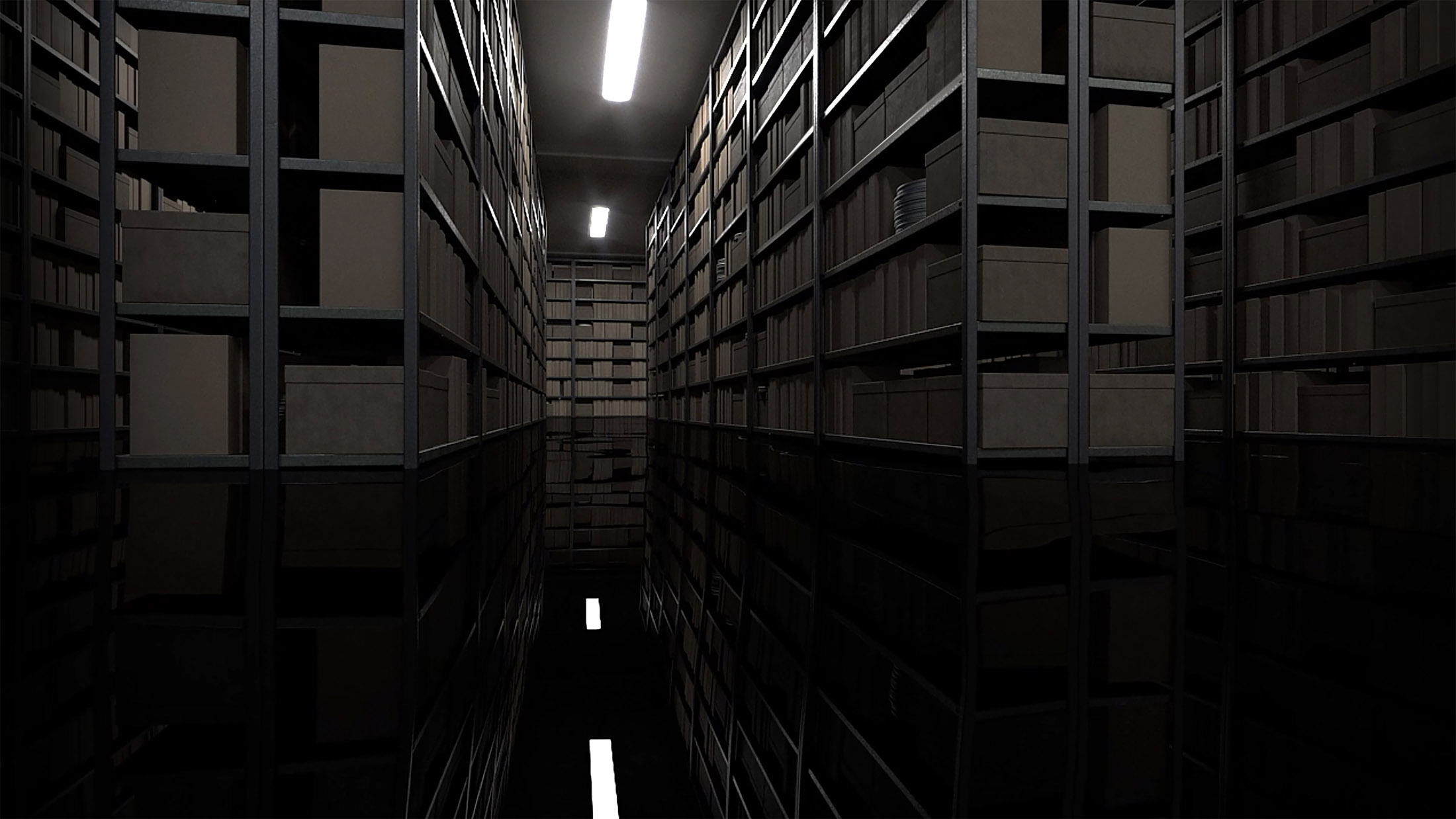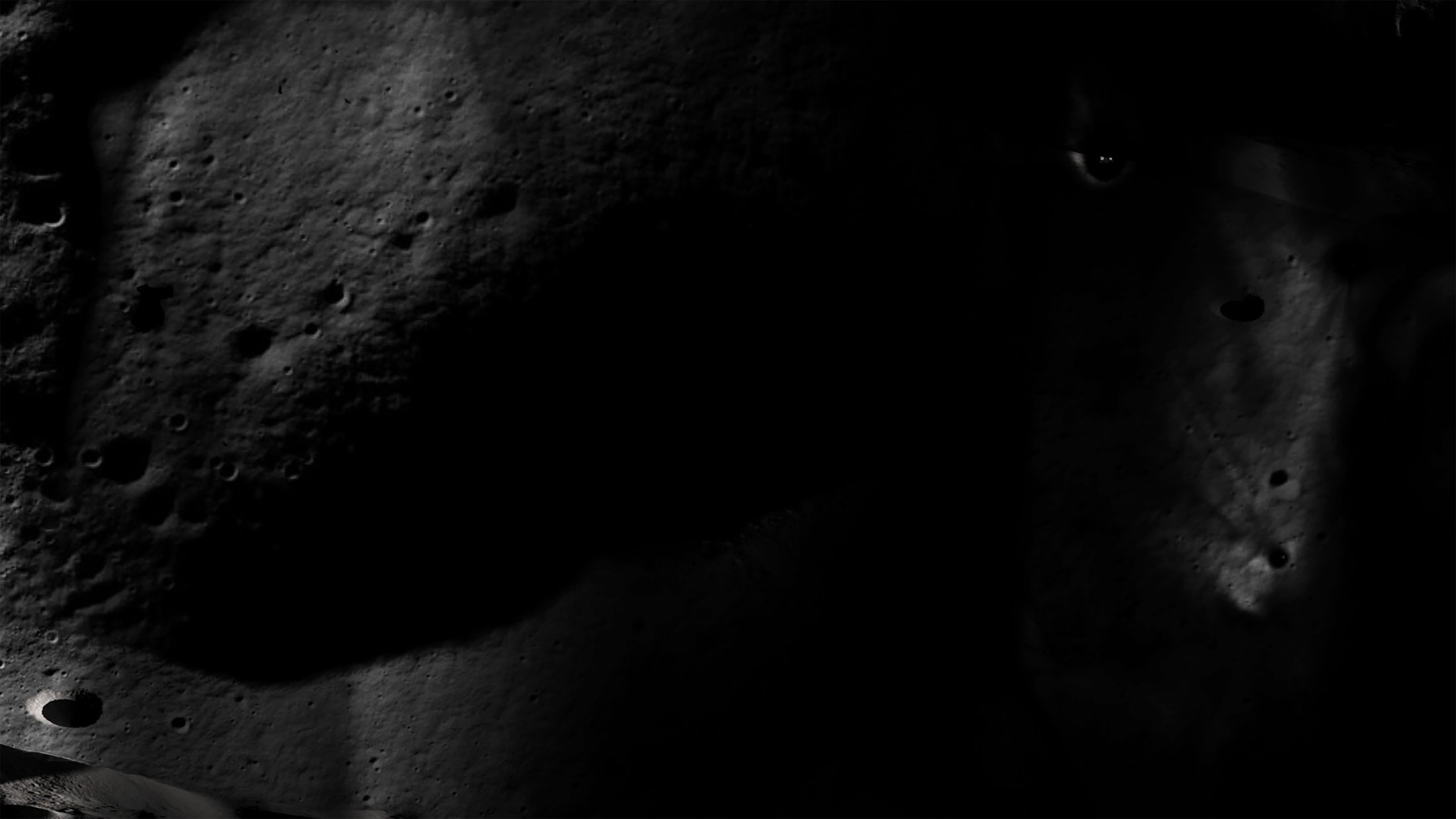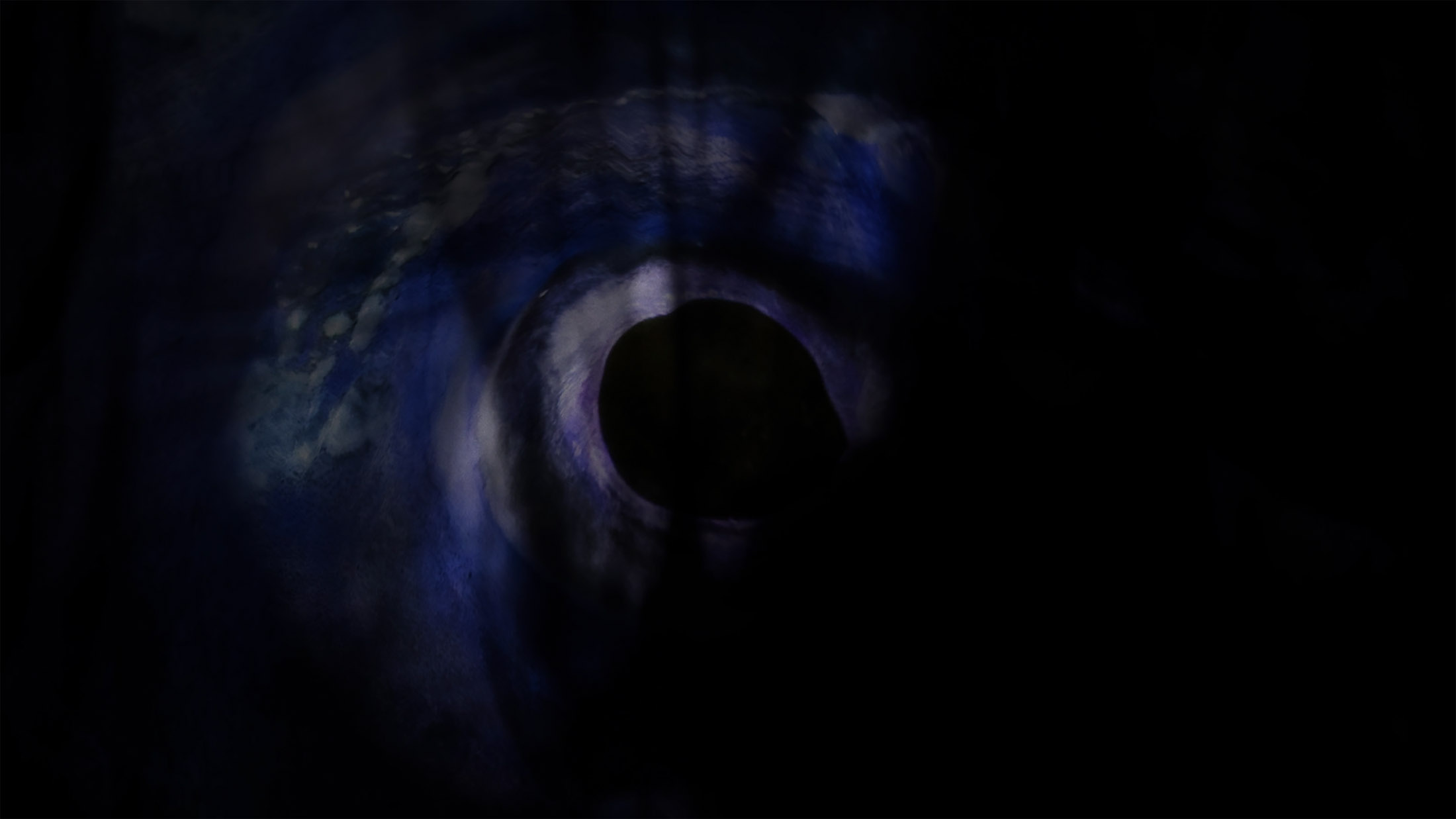Green, how I want you green.
Green wind. Green branches.
The ship out on the sea
and the horse on the mountain.
–Federico García Lorca
This series of films departs from a conversation on landscape in the poetry of Federico Garcia Lorca and Mahmoud Darwish. It posits landscape as a place of connection as well as a reflection on memory, distance, and exile. The figure of the olive tree connects a wide Mediterranean region through millennia of parallel agricultural ritual and ecological coexistence. The olive branch is known as a symbol of peace while residing in a region that has been cut apart and divided.
Trees are a living archive of the land. Olive trees can live up to thousands of years, making them a stable and familiar element for generations of their neighbours. The olive branch is a symbol of peace whose stable grip has been wrested from the soil. They are also targets in the ongoing catastrophe in Palestine that is impossible not to speak of.
***
Ghostly halls of a water-logged archive represent the infinite perspectives and information that has been lost. What we conserve of our history as collective memory, is accident as well as the careful collection of specific narratives that create views of history. Huda Takriti’s Refusing to Meet Your Eye (2022) is a video about undocumented archives, about the millions of images that have been lost to history and exist only within the imagination of citizens and those who try to reconstruct moments of history from the shards of evidence that remain. A quick succession of historical photographs collide in the mind as a bricolage of the homogeneity of history. The film moves through a particular case of absence to investigate the meaning of images for the creation of truth.
The film is centred around the story of Popular Front for the Liberation of Palestine (PFLP) member Leila Khaled.[1] In August 1969, she hijacked a flight departing from Rome for Tel Aviv and diverted the aircraft to Damascus. Yitzhak Rabin, an Ambassador of Israel was scheduled to be on that flight but did not board the aircraft in Rome; he later went on to become a member of the Knesset and Prime Minister.[2] After taking control of the aircraft, she instructed the pilot to fly over Haifa so that she could see her birth city for the first time since her family fled on 13 April, 1948.[3] The intention was to cause a disruption to the flight, release the passengers, and blow up the nose of the aircraft as a message to imperial powers.[4] A photographer was placed at the point of the plane’s explosion, but forgot to remove the lid from the camera before taking the snapshot. We are left with an entirely black photograph that communicates absence.
The photograph that made headlines shows Khaled’s face, she smiles and throws up a V-shaped symbol of victory within the courtroom that sentenced her to a prison term in Damascus. She replaces the action of material damage with a symbolic gesture of optimism in the face of constant defeat. The numerical years from the 1960’s through to the 2010’s flash on the screen as a reminder of the decades of resistance from Palestinians that have come and gone without end nor solution as well as the history of the Arab world up until 2011. The sequence comments on the haunting passage of time that layer interconnected defeats through history. Takriti questions the framing of history by focusing on the lacunae of archives, an absence that tells us more about how the past is created rather than what truly occurred.
Notes:
[1] Interactive Enylcopedia of the Palestine Question, “Leila Khaled” (https://www.palquest.org/en/biography/9857/leila-khaled”
[2] Rabin was Prime Minister of Israel during the Oslo Accords, and was assassinated by right-wing settler who opposed the accords in 1995. (https://www.theguardian.com/world/2020/oct/31/assassination-yitzhak-rabin-never-knew-his-people-shot-him-in-back)
[3] Dorian Cope, “Leila’s First Hijack” (https://www.onthisdeity.com/29th-august-1969-%E2%80%93-leilas-first-hijack/)
[4] https://www.vice.com/en/article/9k99k7/leila-khaled-first-female-hijacker-profile
Huda Takriti, Refusing to Meet Your Eye, 2022, HD, Color, Black & White, Sound, 13:09 min
Huda Takriti, Refusing to Meet Your Eye, 2022, HD, Color, Black & White, Sound, 13:09 min
Huda Takriti, Refusing to Meet Your Eye, 2022, HD, Color, Black & White, Sound, 13:09 min
Huda Takriti, Refusing to Meet Your Eye, 2022, HD, Color, Black & White, Sound, 13:09 min
Huda Takriti, Refusing to Meet Your Eye, 2022, HD, Color, Black & White, Sound, 13:09 min
Huda Takriti, Refusing to Meet Your Eye, 2022, HD, Color, Black & White, Sound, 13:09 min






